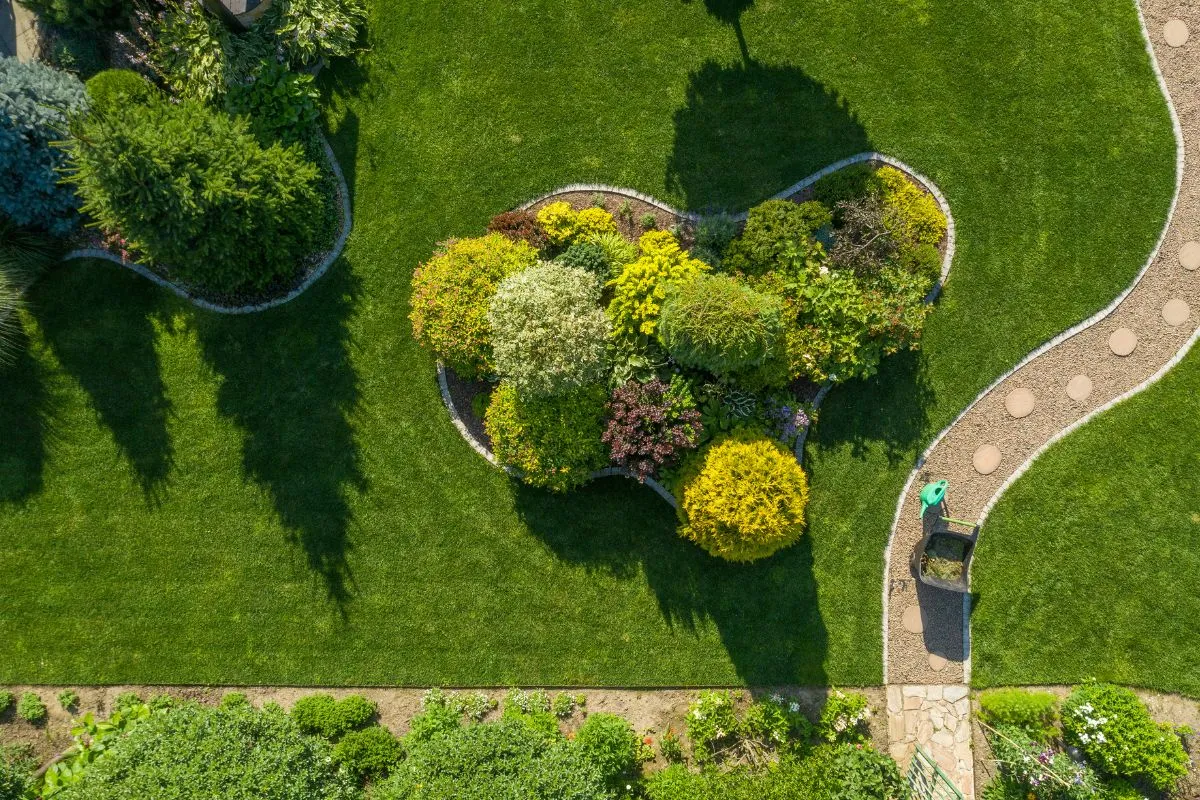
First impressions last a long time, so you need to make sure you’re putting your facility’s best face forward. Grounds maintenance is the collection of season-based inspections, tasks, and repairs the team completes to keep the areas around buildings functional, which can mean everything from aesthetically pleasing and inviting to safe and secure. With the right programs in place, grounds maintenance can protect your property and profits by reducing the effects of weather and increasing tenancy rates.
What is grounds maintenance?
Ground maintenance is the programs, processes, and policies an organization uses to look after the areas around their facilities. It’s how they ensure everything looks good and functions properly. Just like the assets and equipment inside the buildings, the physical space around the facilities needs attention if an organization hopes to maximize its value.
What are the benefits of grounds maintenance?
On top of making everything look good, grounds maintenance delivers a lot of additional benefits, including avoiding damage to your buildings and cutting energy costs.
With the right landscaping, you can reduce the risk of damage to your foundation by controlling the amount of water in the soil around your buildings. Generally, soil settlement leads to vertical cracks in the foundation, increasing the chances of water leaks. Horizontal cracks are more serious. Here, water-saturated soil pushes against the outside of the foundation. Worst-case, you start to see walls bow, buckle, or even cave. With the right landscaping, you can have the water flow away from your buildings, reducing the stress on the foundations.
Above ground, planting trees in the right spots helps protect your buildings from the elements, making it cheaper to keep them cool in the summer and warm in the winter. When it’s hot outside, trees provide shade. And when it’s cold, they block the wind.
And the effects are not limited to buildings. Good landscaping makes a positive first impression, making it easier for commercial real estate companies to draw in and retain tenants. But it can also be used to keep people out. Strategically places landscape features act as natural barriers, deterring bad actors.
The new American embassy grounds in England include a park open to the public, complete with a pond that doubles as a moat around the main building. Other security-through-landscaping features include “… a low wall, for example, provides seating and doubles as an anti-ram device, while a hedge—typical of English parks—conceals bollards.”
What are common examples of grounds maintenance?
There’s a lot more to it than just cutting the grass, although that’s certainly also a part of it.
- Grounds maintenance can include:
- Trimming trees and hedges
- Keeping walkways clear
- Cleaning out gutters
- Installing and maintaining fencing
- Picking up litter
- Controlling pests and invasive species
- Removing snow
- Watering lawns, trees, and plants
- Maintaining irrigation systems
This is only a partial list, and it’s important to remember that the tasks change with the seasons. So, raking leaves only happens in the fall, while snow removal is hopefully only during the winter.
Where is grounds maintenance important?
It’s important everywhere, but there are places that put in an extra effort to ensure their grounds are properly maintained.
For example, apartment complexes. Here, the right combination of landscaping and trees provides both shade and privacy. It’s the same for shopping malls. But now, there’s an additional need to keep everything aesthetically pleasing to help bring in both companies and customers. The idea is to create a space where people want to linger. At cemeteries, the landscaping sets a different tone, one of ordered, reflective calm.
Golf courses invest heavily in grounds maintenance. Players demand fairways and putting greens that are both beautiful to look at and challenging to play on.
What are the types of ground maintenance workers?
A lot goes into good grounds maintenance, and it takes a talented team.
Groundskeepers oversee general tasks, including:
- Mowing lawns
- Raking leaves
- Removing snow
- Trimming hedges
Landscape workers look after planting:
- Trees
- Flowers
- Hedges
- Grass
Groundskeepers and landscapers are often also responsible for grounds-keeping equipment like mowers and sprinkler systems.
Pesticide professionals oversee chemical treatments that control pests and weeds. In some cases, groundskeepers and landscapers can cover these responsibilities, but depending on the strictness of local regulations and the complexity of the application, organizations might instead use certified professionals.
How does facility management software make ground maintenance easier?
Whenever you need to take control of work order management, the right facility management software makes life easier, and grounds maintenance is no exception.
Stop preventive maintenance inspections and tasks from slipping through the cracks
Because so much of the work is seasonal, and therefore time sensitive, you need to be able to schedule work and then track it to make sure the grounds team completes it on time.
You can’t go back and do more raking once the first snow falls. And you can’t shovel the snow back away from the buildings once it’s already had a chance to melt, soaking the soil close to the foundations.
Modern preventive maintenance workflows help you set up, schedule, and track PMs. Once you’ve set the inspections and tasks, either by date or usage, the software autogenerates and sends out the work orders. Work stops falling through the cracks because the software solution is there to do all the remembering for you.
Manage third-party vendors like they’re part of the team
Although there’s always a list of little things that the team needs to do, a lot of grounds maintenance is more project-based work, which often means bringing in third-party vendors.
Managers would likely bring in vendors to install and upgrade sprinklers, install or repair fencing, and spread chemical weed killers and fertilizers.
A modern unified grounds maintenance solution makes it much easier to organize and track work done by an outside team. It starts with having all your vendor information safely inside the software, which means no more searching through old paperwork or searching through last year’s emails looking for phone numbers. From there, you can classify each vendor, so you have a list of preferred ones. When you’re setting up a work order, you can directly associate the right vendor with the right work from inside the software and send them all the information they need to do the work. Because you’re doing everything from the same platform, all the work, parts and materials, and costs are easy to track and use in your reports.
Take complete control of on-demand work orders
Because nature follows annual rhythms, there are many inspections and tasks you can schedule well in advance. For example, you must get the snowblowers inspected and tuned up in late fall.
But just like with every other type of maintenance, there are still plenty of on-demand work orders. You might know it gets windy in the fall, but that doesn’t mean you can predict if that large tree by the parking lot drops a lot of heavy branches, blocking the entrance and exit.
Modern work order software streamlines your work order workflows. As soon as someone sees a problem, they can reach you directly through the online maintenance request portal. All they need to do is visit the site and fill in the predetermined data fields.
From there, the information comes to you directly, where you can approve the request and then generate, prioritize, assign, and track an on-demand work order packed with everything the maintenance team needs to close out quickly, including:
- Comprehensive asset data
- Step-by-step instructions
- Customizable checklists
- Digital images, manuals, and warranties
- Associated parts and materials
For larger grounds, the interactive site plans help technicians get where you need them as efficiently as possible. Just like with most maintenance workflows, where inefficient back-and-forth kills productivity, you want the maintenance teams to move in straight lines.
And all the while staying mobile
If your team is still trying to work with paper work orders, they’re wasting a lot of time running around, not getting stuff done.
With paper, when you need to assign a new work order, you need to walk back to the office to get and fill out the right forms. Then you need your tech to come to the office to pick up the paper work order. That’s a lot of literal steps they must take before they can start. Any time they need to ask a question or confirm something, they need to run around the grounds looking for you or another senior tech.
With a mobile maintenance app, they have everything they need right in their back pocket on any Internet-connected mobile device. They can access their assigned work orders and, if they have questions, can use the work order and task comments to reach out to the rest of the team. Using the device’s built-in camera, they can even upload images directly to the work order.
Now instead of needing you to come all the way over to the other side of the grounds, a tech can upload a pic of their completed work and request a remote visual inspection and approval before closing out.
In the end, there’s more to maintenance than just looking after what’s inside the facilities. Grounds maintenance helps keep the areas outside both looking good and functioning properly. There are many different types of grounds maintenance, but they all benefit from a unified facility management solution.




